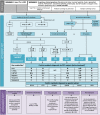Correction to: Consensus guideline for the diagnosis and treatment of tetrahydrobiopterin (BH4) deficiencies
- PMID: 32758270
- PMCID: PMC7409715
- DOI: 10.1186/s13023-020-01464-y
Correction to: Consensus guideline for the diagnosis and treatment of tetrahydrobiopterin (BH4) deficiencies
Abstract
An amendment to this paper has been published and can be accessed via the original article.
Figures

Erratum for
-
Consensus guideline for the diagnosis and treatment of tetrahydrobiopterin (BH4) deficiencies.Orphanet J Rare Dis. 2020 May 26;15(1):126. doi: 10.1186/s13023-020-01379-8. Orphanet J Rare Dis. 2020. PMID: 32456656 Free PMC article. Review.
References
Publication types
Grants and funding
LinkOut - more resources
Full Text Sources

